Scotch broom identification and control
Information about the noxious weed Scotch broom. Scotch broom is also known by its scientific name, Cytisus scoparius.
About this weed
Scotch broom is a non-regulated Class B noxious weed, selected for control in limited areas. Control is not required in King County under the state noxious weed law, except on the I-90 right-of-way east of mile post 34 and on the Highway 2 right-of-way where it enters King County. Control is required in these areas to limit Scotch broom's spread to neighboring counties across the mountains. Scotch broom is also on the Washington quarantine list.
Scotch broom, known as Cytisus scoparius, is in the pea family. Other common names for this plant are Scot’s broom, common broom, broomtops, European broom, Irish broom, and Scottish broom.
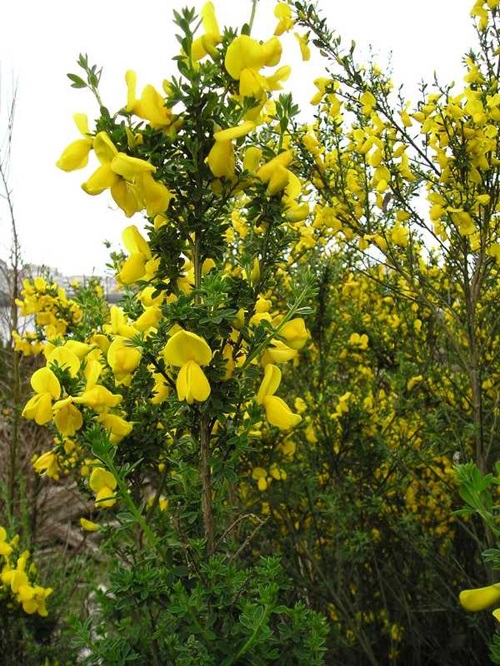
Why it's a problem
Scotch broom is highly aggressive and forms dense stands that don’t allow for other plants to grow. This reduces wildlife habitat and makes it difficult for native plants to establish. Seeds are toxic to livestock and horses. Seeds can last more than 60 years in the soil making control difficult once it is established. Scotch broom is also highly flammable and can increase fire risk.
Plant description
Scotch broom is originally from Europe. Scotch broom is an evergreen shrub (stems stay green, leaves often fall off in summer) that can reach from 6 to 10 feet tall.
Its leaves are small and oval, located along the stem. Branches and stems are erect with prominent ridges, green when young, and brown as they mature.
Its showy flowers are bright-yellow and shaped like pea-plant flowers.
Scotch broom reproduces by seed. Seedpods are between 1 to 2.5 inches long, they range in colors changing from green to brown to black as they mature, are hairy on the margins. Seed pods reach maturity in late Summer then explode audibly, ejecting seeds up to 20 feet. A single plant can make up to 10,000 seeds per year. Seeds can remain viable for more than 60 years. Seeds often sprout following a disturbance such as construction, fire, or flooding.
Scotch broom form impressive tap roots. These tap roots are a long narrow carrot like root that grows straight down with root hairs reaching outward towards the bottom.
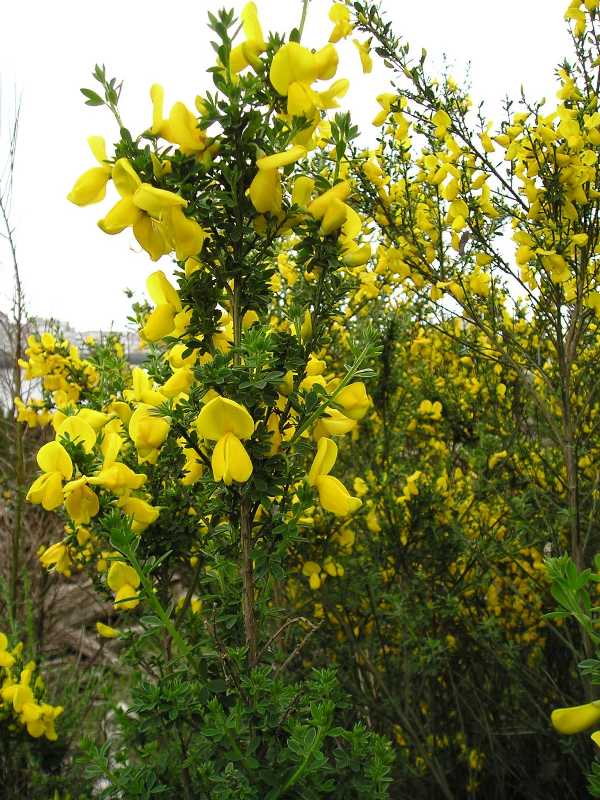
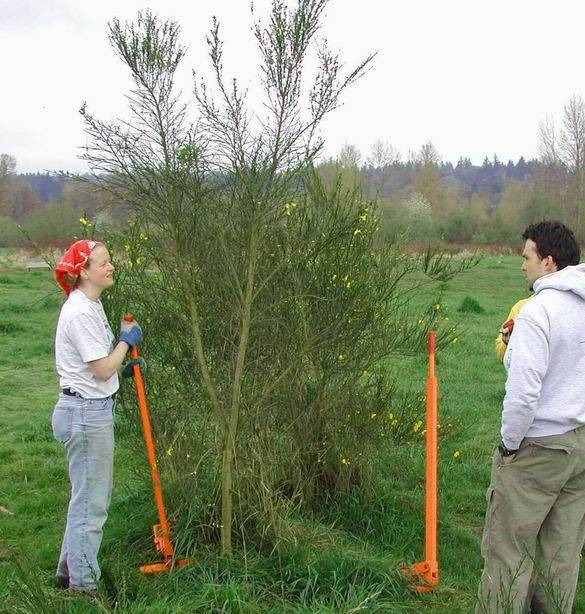
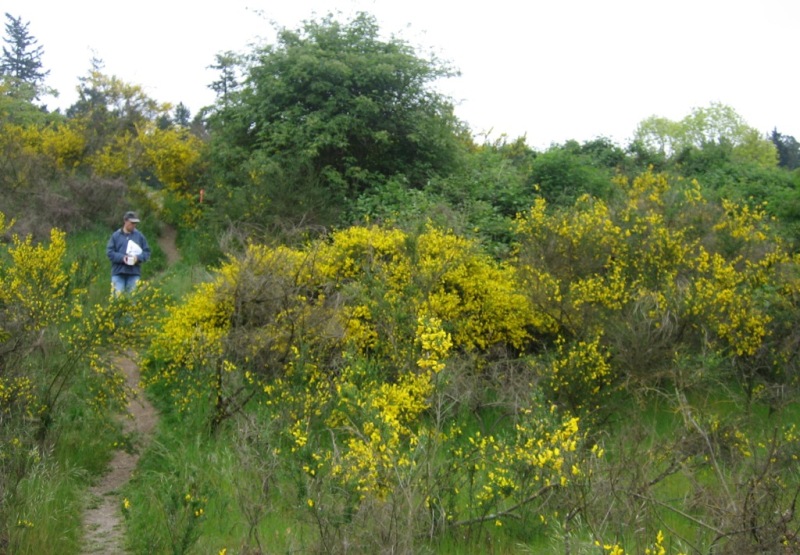
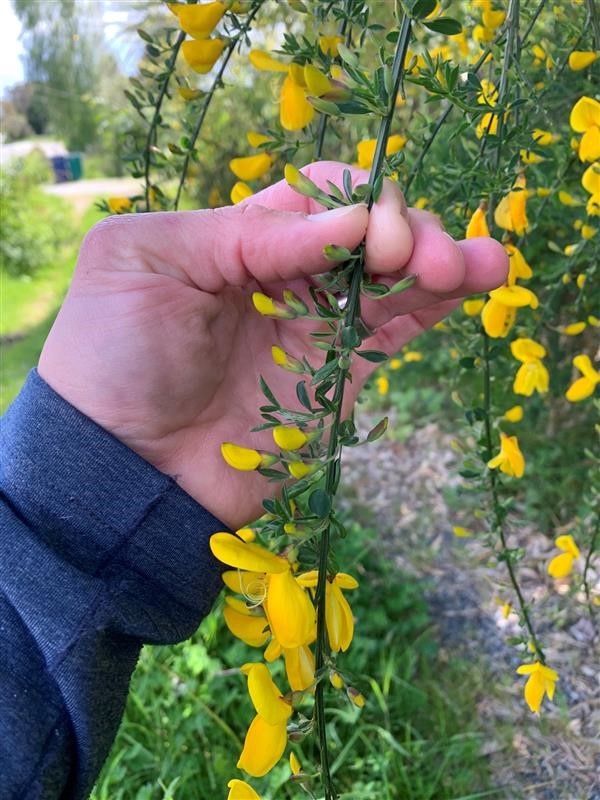
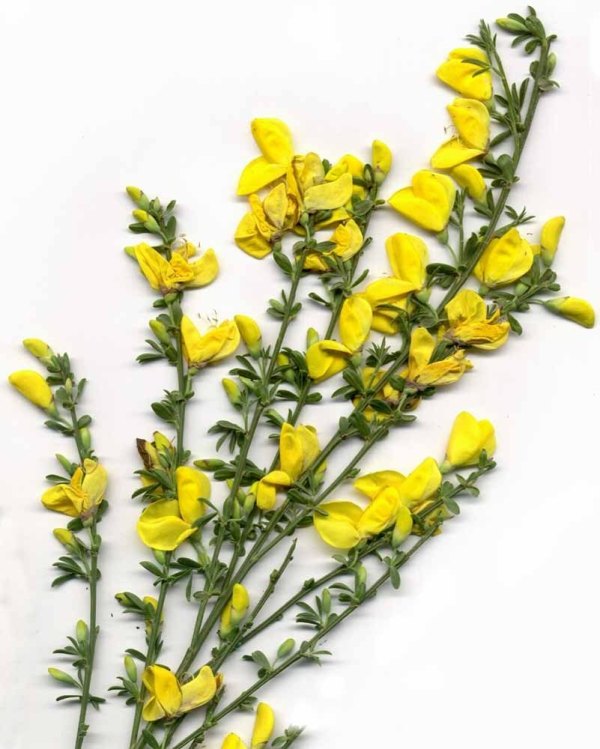
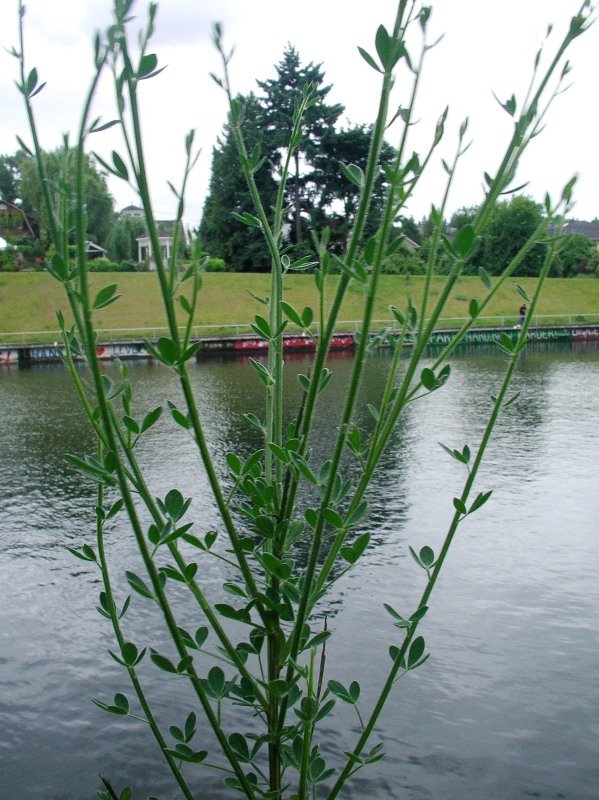
Be aware of look-alike plants
More information about some of the plants Scotch broom is often confused with:
When in doubt, take photos and report them on iNaturalist.
What to do if you find it
Because Scotch broom is so widespread, property owners in King County are not required to control it. We are not generally tracking infestations. We highly recommend you control this species if it is on your property. For public infestations, many public agencies and conservation organizations are working to remove Scotch broom. They may have opportunities for you to volunteer.
Control methods
We recommend using a combination of methods to control noxious weeds. In areas with few weeds, it is important to act quickly before they become harder to control. Make a long-term plan as it often takes several years to get rid of most weeds. Start in the least infested areas first and then move into more heavily infested areas.
Read Best Management Practices (BMP) for Scotch Broom for more in-depth control information (380KB)
Plants produce thousands of seeds each year that can survive for a long time in the soil, so methods must be repeated for many years. Continue to check areas for seedlings after plants have been controlled. Soil disturbance can cause new plants to come up. Aim to control plants before seed pods mature. Re-vegetate cleared areas to provide competition to germinating seeds. Use non-invasive and/or native species to replace the broom.
Manual control
Plants under 3 feet can be hand pulled when the soil is soft. For larger plants, you can cut mature plants (brown stems) at the base during the dry season. Plan to revisit the site for regrowth control. Stems that are more green than brown are most likely to re-grow.
Mechanical control
There is a tool made specifically for this plant. A steel weed puller, also known as a “Weed Wrench,” is made to pull these deep tap rooted plants out of the ground. Tool libraries in King County have these tools available for loan. The noxious weed program also has some tools they can loan out. See our blog post for more information.
Chemical control
Stay safe when using herbicide:
- Always read the label before use.
- Wear a long-sleeved shirt, long pants, shoes, and eye protection.
- Follow state and local regulations.
Foliar herbicide application is most effective after full leaf development and before leaves fall off in summer. Basal or cut stump treatment methods are effective at any time. Some effective products include triclopyr, glyphosate, and imazapyr. Grass cover helps suppress Scotch broom seedlings. Use a selective broadleaf herbicide, such as triclopyr, when grass is present.
See the PNW Pest Management Handbook for the most up to date and specific method for chemical control of scotch broom.
For more information or a site-specific recommendation in King County, contact the noxious weed program. For information in other locations, contact your local weed board or extension office.
Disposal instructions
Do not put plants with seed pods in compost or yard waste. Seeds are very tough and long-lived and can contaminate mulch made from compost. Throw these plants and seeds into the garbage for the landfill.
You can dispose of plants without seed pods in yard waste. You can also cut up stems into foot-long pieces and leave them on site to dry out. Because it is highly flammable, don’t leave piles of Scotch broom near forests or buildings.
Noxious Weed Disposal - Washington State Noxious Weed Control Board
Learn more about scotch broom
Read scotch broom's fact sheet (380KB)
This fact sheet is also available in these languages:

 Translate
Translate